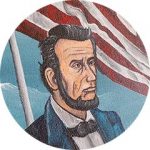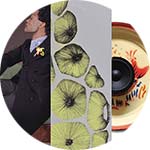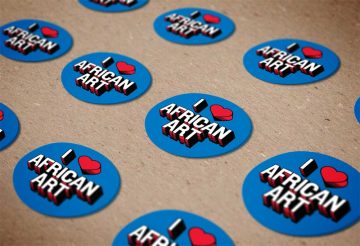By year exhibition opened
2009 – present
2024
Before Nollywood … The Ideal Photo Studio
Before Nollywood . . . The Ideal Photo Studio is a living exhibition and an ongoing research and photography project that explores the lives of patrons from the Ideal Photo Studio and a history of Benin City and its community through the photographs of Solomon Osagie Alonge. We are seeking your help in naming people in the Ideal Photo Studio portraits, and inviting you to share personal stories and memories of your childhood, friends, family, social life, and community in Benin City, Nigeria, at the Tapestry of Benin Memories wall.
Georges Adéagbo
Create to Free Yourselves: Abraham Lincoln and the History of Freeing Slaves in America
Closes April 1, 2024
The Smithsonian National Museum of African Art partnered with President Lincoln’s Cottage in 2022 to commission an installation by Beninois artist Georges Adéagbo. Created with the goal that the artwork might join the museum’s collection, this installation is Adéagbo’s vision for us. With Create to Free Yourselves, Adéagbo invites each of us to consider our individual reflections of Abraham Lincoln and the unfinished journey toward emancipation for all.
2023

Iké Udé: Nollywood Portraits
February 5, 2022 – May 29, 2023
Multimedia artist Iké Udé celebrates the luminescent beauty and mystique of African visionaries by turning his lens on the talented people who drive Nollywood, Nigeria’s $3 billion film industry. Known for his performative and iconoclastic style and vibrant sense of composition, Udé’s photographs use color, attire and other markers to make elegant yet unexpected portraits. His photographs make a bold statement about the power of African identities, despite centuries of attempted erasure by Eurocentric art history and notions of beauty.
#nollywoodsmithsonian

Create to Free Yourselves: Abraham Lincoln and the History of Freeing Slaves in America
Award-winning sculptor and found-object artist Georges Adéagbo (born in 1942 in Cotonou, Benin) is a virtuoso of site-specific installation, and has brought his transformational art to President Lincoln’s Cottage in January 2023 for a month-long special exhibition titled: Create to Free Yourselves: Abraham Lincoln and the History of Freeing Slaves in America.
2022
NMAfA+ in Lagos
November, 2021
Using sound, photography, and food respectively, artists Emeka Ogboh, Iké Udé, and Temitayo Ogunbiyi with chef Renèe Chuks question assumptions concerning culture, geography, and identity. By appealing to the senses, these artists urge audiences to remember and recognize the complexity inherent in representation; natural, spiritual, and social ecosystems; and the performances within everyday life.
Taste! is a platform for creative encounters centering on a multifaceted, far-reaching Lagos. Realized in collaboration with the Africa International Film Festival (AFRIFF), ART X Lagos, and the African Artists’ Foundation. Taste! is the foundation experience of 24 Hours of the Smithsonian in Lagos, the inaugural event that launched the National Museum of African Art’s new international presence.
NMAfA+ in Johannesburg
September 15–25, 2022
In the lead up to the 10th Basha Uhuru Festival, the National Museum of African Art hosted a 10-day series of art experiences titled “The Demonstration” at Constitution Hill Sept. 15–25. “The Demonstration,” part of the museum’s NMAFA+ series, included an exhibition, public conversations and artist-led city tours.
Curated by Johannesburg-based artist Siwa Mgoboza, “The Demonstration” experiences focused on the theme of “Our Shared Future: Reckoning with Our Racial Past,” which aligns with the Smithsonian-wide initiative to address systemic racism and racial inequity in the U.S. and globally.
Beginning Sept. 15, members of the public were invited to an exhibition designed to support and amplify South African artists whose work pushes boundaries and provokes important conversations. Featured artists included Blessing Ngobeni, Patrick Bongoy, Luke Radolff, Nelisiwe Xaba & Mocke Jansen van Veuren, and Ayana V. Jackson.

Heroes: Principles of African Greatness
Opened November 16, 2019
Be your best. This is the quest that the greatest of heroes model for us. Through their journeys, struggles, and triumphs, exceptional individuals exemplify values that we celebrate in tales of heroic accomplishment.
Through art, artists tell such stories—stories of the world’s current complexity, but also visions of a world that could yet be. Heroes: Principles of African Greatness features artworks from the National Museum of African Art’s permanent collection that tell the story of key heroic principles and personages in Africa’s arts and history. Throughout, core values are considered as each artwork is paired with a specific historic African individual who embodies the value expressed in the selected work.
Discover Africa’s heroes—some well-known, others perhaps surprising—and see artworks in new ways.
#AfricanHeroes

I Am… Contemporary Women Artists of Africa
June 20, 2019 through 2022
Taking its name from a 1970’s feminist anthem, I Am… Contemporary Women Artists of Africa draws upon a selection of artworks by women artists from the Smithsonian National Museum of African Art’s permanent collection to reveal a more contemporary feminism that recognizes the contributions of women to the most pressing issues of their times. With experimental and sophisticated use of diverse media, the 27 featured artists offer insightful and visually stunning approaches to matters of community, faith, the environment, politics, colonial encounters, racism, identity, and more.

Caravans of Gold, Fragments in Time:
Art, Culture, and Exchange across Medieval Saharan Africa
July 16 2021 – Feb. 27 2022
Gold from West Africa was the engine that drove the movement of things, people, and ideas across Africa, Europe, and the Middle East in an interconnected medieval world. As the incredible works in this exhibition show, it is not possible to understand the emergence of the early modern world without this West African story.
Caravans of Gold calls on what archaeologists have termed “the archaeological imagination”—the act of recapturing the past through surviving traces—to present a critical rethinking of the medieval period. Here, rare and precious archaeological fragments are seen side by side, bringing new understanding to complete works of art from the medieval period.
Medieval Africa begins with the spread of Islam in the 8th century C.E. and recedes with the arrival of Europeans along the continent’s Atlantic Coast at the end of the 15th century. During this era, the Sahara Desert was the center of a global network of exchange. As networks spread, so too did cultural practices, fostering the broad circulation of distinctive Saharan aesthetic and intellectual traditions connected to Islam. The reach of trans-Saharan exchange is revealed in the fragments excavated from archaeological sites, now uninhabited, that were once vibrant communities.
#CaravansNMAfA #CaravansofGold
Credits
“Caravans of Gold is organized by The Block Museum of Art, Northwestern University and made possible in part by two grants from the National Endowment for the Humanities: Exploring the human endeavor. The exhibition is also supported in part by Northwestern’s Buffett Institute for Global Studies. The exhibition’s travel to the NMAfA is made possible by the support of five anonymous donors, and generous contributions by Sonny and Michelle Kalsi, Sukey and Michael Novogratz, Susie Hahn and Jon Roy, Mustafa A. Jama, Marti Meyerson and Jamie Hooper, Cory and Diane Pulfrey, Owen and Jennifer Thomas, Stephen Trevor and Stephanie Hunt, and Zoe Cruz. Additional support is provided by the National Endowment for the Arts, the Myers Foundations, and the Sandra L. Riggs Publications Fund.”
2020
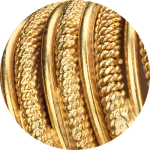
Good As Gold: Fashioning Senegalese Women
Closed February 2, 2020
In the cities of the West African nation of Senegal, stylish women have often used jewelry as part of an overall strategy of exhibiting their elegance and prestige. Rooted in the Wolof concept of sañse (dressing up, looking and feeling good), Good As Gold examines the production, display, and circulation of gold in Senegal as it celebrates a significant gift of gold jewelry to the National Museum of African Art’s collection.
2019
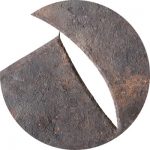
Striking Iron: The Art of African Blacksmiths
Closed October 14, 2019
For more than two millennia, ironworking has shaped African cultures in the most fundamental ways. Striking Iron: The Art of African Blacksmiths reveals the history of invention and technical sophistication that led African blacksmiths to transform one of Earth’s most basic natural resources into objects of life-changing utility, empowerment, prestige, spiritual potency, and astonishing artistry.
Striking Iron is an international traveling exhibition organized by the Fowler Museum at UCLA that combines scholarship with objects of great aesthetic beauty to create the most comprehensive treatment of the blacksmith’s art in Africa to date. The exhibition includes over 225 artworks from across the African continent focusing on the region south of the Sahara and covering a time period spanning early archaeological evidence to the present day. Striking Iron features artworks from the Fowler collection as well as American and European public and private collections.
Striking Iron: The Art of African Blacksmiths is organized by the Fowler Museum at UCLA. The curatorial team is led by artist Tom Joyce, a MacArthur Fellow originally trained as a blacksmith, with co-curators Allen F. Roberts, UCLA Professor of World Arts and Cultures/Dance; Marla C. Berns, Shirley & Ralph Shapiro Director, Fowler Museum; William J. Dewey, Director, African Studies Program and Associate Professor of African Art History at Pennsylvania State University; and Henry J. Drewal, Evjue-Bascom Professor of Art History and Afro-American Studies at the University of Wisconsin–Madison.
Major funding for Striking Iron comes from the National Endowment for the Humanities and the National Endowment for the Arts. Generous support is also provided by the Fowler Museum’s Martha and Avrum Bluming Exhibition Fund.

![]()
The National Museum of African Art is grateful to Nancy and David Barbour, Nicole and John Dintenfass, Lydia Puccinelli Robbins, and members of the museum’s Advisory Board for their generous support of its presentation of Striking Iron: The Art of African Blacksmiths.

African Mosaic: Selections from the Permanent Collection
Ongoing
A towering and visually striking sculpture of Haitian leader Toussaint Louverture by contemporary Senegalese artist Ousmane Sow is the centerpiece of an exhibition of important acquisitions of the past decade at the Smithsonian’s National Museum of African Art. African Mosaic: Selections from the Permanent Collection showcases museum purchases and gifts and provides a glimpse into the collecting opportunities and decisions that exist for art museums.
Healing Arts
Closed June 27, 2019
Greeting visitors in the museum’s entry pavilion, select pieces from the museum’s permanent collection reveal the skill and range of African artists who create art empowered to counter physical, social, and spiritual problems. Works of diverse materials and expressive styles might contain medicines, draw upon the power of the divine, or address such global issues as the HIV/AIDS crisis.
2018

World on the Horizon: Swahili Arts Across the Indian Ocean
Closed September 4, 2018
Located at the crossroads of Africa and the Indian Ocean, the Swahili coast has been a vibrant arena of global cultural convergence for over one millennium. For centuries, peoples from the Arabian Peninsula, Asia, Africa, and Europe have journeyed across the Indian Ocean in many directions. On the east African coast, this confluence of peoples gave rise to many diverse communities that are often called “Swahili”—after the Arabic word meaning “edge” or “coast.”
Swahili coast artworks have been shaped by complex migrations across great distances, the formation of new empires, and the making and unmaking of communities and social identities. World on the Horizon explores Swahili arts as objects of mobility, outcomes of encounter, and as products of trade and imperialism. Works from different regions and time periods come together in this exhibition to reveal the movement of artistic forms, motifs, and preferences, and to reflect the changing meanings they may carry during the course of their life histories.
Organized by the Krannert Art Museum, World on the Horizon has been made possible in part by major grants from the National Endowment for the Humanities.
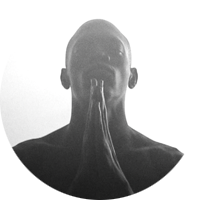
Jim Chuchu’s Invocations
June 21, 2017 – June 24, 2018
Be among the first to see versatile multimedia artist Jim Chuchu’s deeply personal and visually mesmerizing suite of video projections, Invocation: The Severance of Ties (2015) and Invocation: Release (2015)! On view at a public institution for the first time, these recently acquired works commemorate the artist’s own experience coming out as gay and eventual self-acceptance. Enter the gallery and immerse yourself in Chuchu’s pulsing house beats and evocative imagery.

Senses of Time: Video and Film-based Works of Africa
May 18, 2016 – January 21, 2018
Time may seem easy to measure, but it can be challenging to understand. Six internationally recognized African artists examine how time is experienced—and produced—by the body. Bodies stand, climb, dance, and dissolve in seven works of video and film art. These time-based works by Sammy Baloji, Theo Eshetu, Moataz Nasr, Berni Searle, Yinka Shonibare MBE, and Sue Williamson repeat, resist, and reverse the expectation that time must move relentlessly forward.
2017
Emeka Ogboh’s Market Symphony
February 3, 2016 – April 9, 2017
Nigerian artist Emeka Ogboh brings his internationally recognized sound art to the Smithsonian National Museum of African Art in the new work Market Symphony.
A site-specific commission by the museum, Market Symphony draws on the commercial cries and urban ambiance of Balogun, a sprawling open-air market in Lagos, Africa’s largest and most populated city. Ogboh’s “soundscape” lets visitors experience the distinctive sounds of this vibrant Nigerian metropolis and the traders who drive its daily economy, transporting us from the hush of the gallery to a commercial hive approximately 5,407 miles away.
2016

Artists’ Books and Africa
September 16, 2015 – September 11, 2016
African artists are experimenting with the genre of artists’ books, while international artists are exploring African themes in theirs. Artists’ Books and Africa is the first exhibition to focus on African artists books from the Smithsonian Libraries’ Warren M. Robbins Library and the National Museum of African Art.
Artists’ books resist definition. Let’s just say an artist’s book is a book made by an artist that the artist calls an artist’s book!
Artists’ books build on the traditional codex of sequentially bound pages. These visual and tactile artworks play with the codex format in fanciful ways, pushing the boundaries with sheer unexpectedness.

Conversations: African and African American Artworks in Dialogue
November 9, 2014 – January 24, 2016
One of the world’s preeminent private collections of African American art will have its first public viewing later this year at the Smithsonian National Museum of African Art. Conversations: African and African American Artworks in Dialogue brings together artworks from the world-class collections of the National Museum of African Art and Camille O. and William H. Cosby Jr. The exhibition, which opens at the museum Nov. 9 and remains on view through early 2016, is a major part of the museum’s 50th anniversary, celebrating its unique history and contributions toward furthering meaningful dialogue between Africa and the African diaspora.
Chief S.O. Alonge: Photographer to the Royal Court of Benin, Nigeria
September 17, 2014 – July 31, 2016
Chief S.O. Alonge: Photographer to the Royal Court of Benin, Nigeria opened Sept. 17. This major exhibition showcases the photographs of Chief Solomon Osagie Alonge (1911–1994), one of Nigeria’s premiere photographers and the first official photographer to the royal court of Benin. Alonge’s historic photographs document the rituals, pageantry, and regalia of the court for more than half a century and provide rare insight into the early history and practice of studio photography in West Africa.
2015

The Divine Comedy: Heaven, Purgatory, and Hell Revisited by Contemporary African Artists
April 8 – November 1, 2015
Curated by the internationally acclaimed writer and art critic Simon Njami, this dramatic multi-media exhibition reveals the ongoing global relevance of Dante Alighieri’s 14th century epic as part of a shared intellectual heritage. Including original commissions and renowned works of art by approximately 40 of the most dynamic contemporary artists from 19 African nations and the diaspora, this visually stunning exhibition will be the first to take advantage of the museum’s pavilion and stairwells, as well as galleries on the first and third floors.
Celebrated artists like Kader Attia, Wangechi Mutu, and Yinka Shonibare explore the themes of paradise, purgatory, and hell with video, photography, printmaking, painting, sculpture, fiber arts, and mixed media installation. In so doing, they probe diverse issues of politics, heritage, history, identity, faith, and the continued power of art to express the unspoken and intangible.
2014

Africa ReViewed: The Photographic Legacy of Eliot Elisofon
November 21, 2013 – December 14, 2014
Africa ReViewed: The Photographic Legacy of Eliot Elisofon showcases the African photography of celebrated Life magazine photographer Eliot Elisofon and explores the intricate relationships between his photographic archives and art collection at the National Museum of African Art. It was Elisofon’s images-perhaps more than any other American photographer’s-that framed America’s perceptions of Africa and its diverse arts and cultures during the 20th century.

Visions from the Forests: The Art of Liberia and Sierra Leone
April 9 – August 17, 2014
Visions from the Forests surveys the little-known arts of Liberia and Sierra Leone. William Siegmann (1943-2011), former curator of African art at the Brooklyn Museum, lived and worked in Liberia from 1965 to 1987. While there he began collecting art from Liberia and Sierra Leone. Siegmann’s collection, particularly rich in masks, provides an excellent overview the region’s traditional art forms, including numerous objects used in girls’ initiation ceremonies, divination figures, ritual objects and body ornaments cast in brass, small steatite figures dating from the 15th to 18th centuries, and textiles.
Visions from the Forests: The Art of Liberia and Sierra Leone is organized by the Minneapolis Institute of Arts, Minneapolis, Minnesota.

African Mosaic: 50th Anniversary Room
In 1963, during the height of the civil rights movement, retired U.S. Foreign Service officer Warren M. Robbins (1923–2008) established the Center for Cross Cultural Understanding to “show the rich creative heritage of Africa, and to underscore the implications of this heritage in America’s quest for interracial understanding.” The following year, Robbins expanded his vision and opened the Museum of African Art. Originally housed in a Capitol Hill town house once owned by the great intellectual, abolitionist, former slave, and statesman, Frederick Douglass, the museum became part of the Smithsonian Institution in 1979 by an act of Congress and was renamed the National Museum of African. Over the course of its five decades, the museum has become home to more than 12,000 works of art that speak to both the talent and skill of diverse African artists and communities, and the unique history of this institution and the individuals who have helped to shape it.
2013
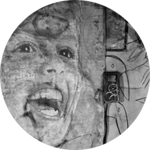
Lines, Marks, and Drawings. Through the Lens of Roger Ballen
June 19, 2013 – June 30, 2014
Roger Ballen (b. 1950) has been shooting black-and-white film for nearly a half-century. A New York native, he has lived in South Africa for more than thirty years. Ballen’s photographs of rural Afrikaners in their homes and urban-based “outsiders” in windowless rooms quickly became distinguished for their interior arrangements and the events that transpired among the people, animals, and furnishings within.

Earth Matters: Land as Material and Metaphor in the Arts of Africa
April 22, 2013-February 23, 2014
Earth Matters: Land as Material and Metaphor in the Arts of Africa is the first major exhibition and scholarly endeavor to examine comprehensively the rich relationship between African artists and the land upon which they live, work, and frame their days.
2012

African Cosmos: Stellar Arts
June 20-December 9, 2012
Some 90 works of art are featured in the first major exhibition and publication that explore the historical legacy of African cultural astronomy and the ways that celestial bodies and phenomena, such as rainbows and eclipses, serve as inspiration and symbol in the creation of Africa’s traditional and contemporary arts. Observations of the heavens are part of the knowledge that informs artistic expression and ritual practice in African cultures. Far from abstract, African ideas about the universe are intensely personal and place human beings in relationships with the earth, sky, and celestial bodies.
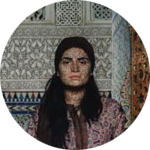
Lalla Essaydi: Revisions
May 9, 2012 – February 24, 2013
Lalla Essaydi’s elegant, creative work belies it subversive, challenging nature. Approximately 30 works of diverse media are drawn from each of her photographic series, including the richly hued Silence of Thought and the more widely known Converging Territories and Les Femmes de Maroc. The exhibition also includes a selection of new works, as well as rarely exhibited paintings and installations.
2011
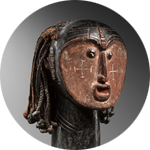
Central Nigeria Unmasked: Arts of the Benue River Valley
September 14, 2011–February 12, 2012
Central Nigeria Unmasked: Arts of the Benue River Valley presents a comprehensive view of the arts produced in the region and includes some of the most abstract, dramatic and inventive sculpture from sub-Saharan Africa.

Artists in Dialogue 2: Sandile Zulu and Henrique Oliveira
February 2, 2011–January 8, 2012
Artists in Dialogue: Sandile Zulu and Henrique Oliveira is the second in a series of exhibitions in which exciting artists (at least one of whom is African) are invited to a new encounter—one in which each artist responds to the work of the other—resulting in original, site-specific works at the museum. The exhibition also includes a selection of works by each artist to reflect who they are coming into the encounter and will be accompanied by a small, full-color publication.
2010
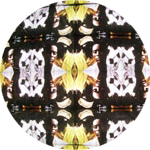
Brave New World
August 9, 2010–November 27, 2011
In Brave New World II Theo Eshetu explores such universal tensions as the relationship between nature and technology and the idea of life as a spectacle. He does so with images that map his personal geography: scenes from a dance performance he filmed at a restaurant in Bali, footage from visits to New York City and Ethiopia, and even a cameo appearance by a box of Kellogg’s corn flakes. He collaborated with musician and sound designer Keir Fraser to produce the video’s seductive and meditative soundtrack.

Grass Roots: African Origins of an American Art
June 23–November 28, 2010
Grass Roots: African Origins of an American Art tells the story of the beautiful coiled basket and demonstrates the enduring contribution of African people and culture to American life in the southeastern United States. The exhibition features about 200 objects, including baskets made in Africa and the American South, African sculptures, paintings from the Charleston Renaissance, historic photography and videos. It traces the history of the coiled basket on two continents and shows how a simple farm tool once used for processing rice has become a work of art and an important symbol of African-American identity.
Organized by the Museum for African Art, New York, in cooperation with Avery Research Center for African American History and Culture at the College of Charleston, McKissick Museum at the University of South Carolina and the Sweetgrass Cultural Arts Festival Association.
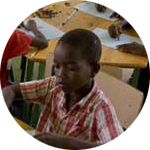
The Healing Power of Art: Works of Art by Haitian Children after the Earthquake
June 17, 2010–February 27, 2011
Soon after the devastating earthquake of January 12, 2010, first lady of Haiti Elisabeth D. Préval called on Haitian artist Philippe Dodard and his fellow artists, as well as psychologists, educators and politicians, to create a safe place for children to express their feelings through art. Nearly 100 paintings and drawings created by Haiti’s young people at Plas Timoun (The Children’s Place) are featured in The Healing Power of Art: Works of art by Haitian children after the earthquake.

Paul Emmanuel Transitions
May 12–August 22, 2010
Transitions comprises a series of five ostensibly “photographic” works which, when examined closely, reveal sensitively hand-drawn, photo-realist images on photographic paper. The works contemplate manhood and the transitions an individual goes through in society. The adjacent video installation, 3SAI: A Rite of Passage, explores the liminal moments of transition, when a young man is either voluntarily or forced to let go of one identity and take on a new identity as property of the state. The 14-minute film documents the head shaving of new recruits at the Third South African Infantry Battalion (3SAI) in Kimberley, one of two South African military training camps that still perform the obligatory hair shaving of army recruits joining the South African National Defence Force.
2009

Yinka Shonibare MBE
November 10, 2009–March 7, 2010
Yinka Shonibare MBE, a mid-career exhibition of the Nigerian-born artist, includes the media of painting, sculpture and installation, photography and moving images. Exhibited works encompass the last 12 years of Shonibare’s career with a focus on recent works juxtaposed with historical works.
Yinka Shonibare MBE is organized by the Museum of Contemporary Art in Sydney, Australia.
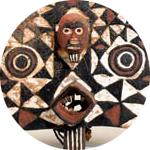
Artful Animals
July 1, 2009–July 25, 2010
Artful Animals, an exhibition dedicated to young audiences, explores how African artists create striking works of art using images from an array of domestic and untamed animals. From rock art to contemporary painting, audiences will discover animals used as symbols of royal arts, in masquerades for the ancestors and others rarely seen. Many of the elements of design are derived through direct observation of the animals in their natural habitat. It is the animal’s conduct and distinct behaviors that carry the messages in performances, stories and proverbs. The approximately 125 works capture not only the physical characteristics of animals but also the many ways that animals, from spiders to leopards, act out our human shortcomings and successes. Themes include notions of nurturing, power, wisdom, transformation, beauty and aggression. The National Museum of African Art is collaborating with Smithsonian education units at the National Zoological Park, National Postal Museum, National Museum of Natural History and Discovery Theater. Each partner site will feature a host of multidisciplinary activities.
The programming project has been supported by the Smithsonian School Programming Fund.
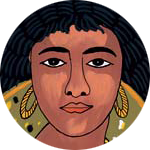
Mami Wata: Arts for Water Spirits in African and Its Diasporas
April 1–July 26, 2009
This exhibition explores the visual cultures and histories of Mami Wata, examining the world of water deities and their seductive powers. It demonstrates how art both reflects and actively contributes to beliefs and religious practices, globalization, and capitalism. Most of all, it reveals the potency of images and ideas to shape the lives of people, communities, and societies.
Mami Wata: Arts for Water Spirits in Africa and the African Atlantic World was organized and produced by the Fowler Museum at UCLA and guest curated by Dr. Henry Drewal. It was made possible by a major grant from the National Endowment for the Humanities, promoting excellence in the humanities.
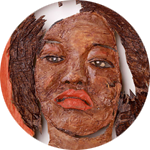
Artists in Dialogue: António Ole and Aimé Mpane
February 4–August 2, 2009
This exhibition inaugurates a new series in which talented African artists are invited to participate in a dialogue—a visual one in which each artist responds to the work of the other—resulting in original, site-specific works for the National Museum of African Art.
Two artists less familiar to U.S. audiences, António Ole of Angola and Aimé Mpane of Democratic Republic of Congo, bring their subtle and sophisticated manipulation of found and organic materials to create visually rich, multimedia installations that speak to the political and economic challenges of their home countries.
Sponsored by DeBeers Incorporated.
2005 – 2008
2008

Desert Jewels: North African Jewelry and Photography from the Xavier Guerrand-Hermès Collection
October 8, 2008—January 11, 2009
For 30 years, Xavier Guerrand-Hermès of the renowned Paris-based fashion empire collected both stunning North African jewelry and historic late 19th- and early 20th-century photographs by some of the region’s most prominent photographers.
The exhibition and national tour are organized by the Museum for African Art in New York and sponsored by Merrill Lynch.
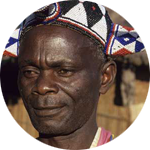
TxtStyles/Fashioning Identity
June 11–December 28, 2008
Textiles are powerful communicators of status, gender and accomplishments in Africa. The extraordinary costumes and textiles of the African continent—from ensembles to wrappers to wall hangings to chain mail and accessories/hats—featured in an exhibition drawn from the National Museum of African Art’s collection, present a wide array of Africa’s textile arts that have seldom or never been on exhibit.

Treasures 2008
April 17–August 24, 2008
Treasures 2008 showcases sculpture made of ivory—a material highly valued universally. These artworks, dating from between the 15th and 20th centuries, range from small personal objects (containers, jewelry) to large public objects (carved tusks, staffs). Treasures 2008 highlights the extraordinary creativity of African artists and what the original owners or caretakers in Africa deemed worthwhile. The exhibition also reveals the “tastes” of collectors in the United States. Works from private collections compose nearly 75 percent of the exhibition (many works from the museum’s collection are gifts from individuals).
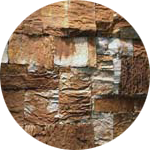
El Anatsui: Gawu
March 12–September 2, 2008
Throughout his career Ghanaian artist El Anatsui has experimented with a variety of media, including wood, ceramics and paint. Most recently, he has focused upon discarded metal objects, hundreds or even thousands of which are joined together to create truly remarkable works of art.
Anatsui indicates that the word gawu (derived from Ewe, his native language) has several potential meanings, including “metal” and “a fashioned cloak.” The term therefore manages to encapsulate the medium, process and format of the works on view, reflecting the artist’s transformation of discarded materials into objects of striking beauty and originality.
2007

The Art of Being Tuareg: Sahara Nomads in a Modern World
October 10, 2007–January 27, 2008
The Art of Being Tuareg examines the historic and evolving culture and arts of the Tuareg peoples of Mali, Niger and Algeria. Approximately 250 works—from private collections as well as national and international public collections—feature a range of artistic genres and media dating from the 19th century to the present.
The exhibition was organized by the Iris & B. Gerald Cantor Center for Visual Arts at Stanford University and the Fowler Museum at UCLA.
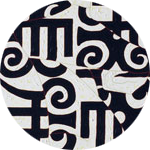
Inscribing Meaning: Writing and Graphic Systems in Africa Art
May 9, 20007–August 26, 2007
This is the first comprehensive exhibition to address the interface between African art and the communicative power of graphic systems, language and the written word. Approximately 80 works, dating from ancient to modern times, represent the ingenuity and creativity of African artists who incorporate script and graphic forms of communication into a wide range of artworks, including everyday and ritual objects, religious painting, talismans, leadership arts, popular arts and photography.
The exhibition will be on view at the UCLA Fowler Museum of Cultural History Oct. 14, 2007, to Feb. 17, 2008.
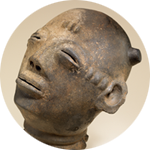
Walt Disney–Tishman African Art Collection Highlights
Donated to the museum in 2005, the Walt Disney–Tishman Collection is known for its unique and rare works of traditional African art from throughout sub-Saharan Africa. The collection has been instrumental in defining the field of African art history in the United States and abroad.
2006
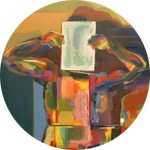
Body of Evidence (Selections from the Contemporary African Art Collection)
June 14, 2006–December 2, 2007
The museum’s commitment to growing its collection of contemporary African art is seen in this display of objects from its permanent collection. This exhibition will showcase works of art that represent the curator’s choice and will rotate a myriad of objects from different cultures.
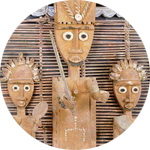
Resonance from the Past: African Sculpture from the New Orleans Museum of Art
October 5, 2006–January 28, 2007
Resonance from the Past consists of a selection of the finest works of African sculpture from the New Orleans Museum of Art. During the last four decades since the collection was formed many scholars have conducted research in Africa to discover the uses and meanings of these works. Included in the exhibition are ancestor figures, symbols of authority, and objects of transformations. Sculpted artworks, including masks, pots, costumes, and musical instruments, represent elements of divination and initiation ceremonies, bestow power on their owners, and serve as altars to mediate between humans and the divine.
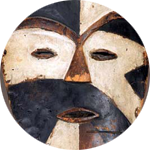
First Look: The Walt Disney–Tishman African Art Collection
May 17–December 3, 2006
Walt Disney World Co., a subsidiary of the Walt Disney Company, donated one of the world’s finest known collections of traditional African art—the Walt Disney–Tishman African Art Collection—to the National Museum of African Art in 2005. First Look offers a glimpse of this remarkable collection of 525 objects that encompasses most major styles of African art. An inaugural exhibition showcasing 80 masterpieces will open in early 2007.

African Gold: Selections from the Glassell Collection, The Museum of Fine Arts, Houston
May 17–November 26, 2006
The dazzling works presented here were made primarily by Akan artists living in Ghana and the neighboring Côte d’Ivoire. Bordering the Atlantic Ocean, the gold-rich forest region of what is now Ghana was once known as the Gold Coast. While these works of art date to the 19th and 20th centuries, their history is linked to that of the West African empires that rose to power more than 1000 years.
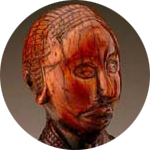
BIG|small
January 17–July 23, 2006
Contemporary and tradition-based works illustrate how artists use size and scale to convey—literally and metaphorically—status, power, community and privacy as well as size. Objects of varying size are juxtaposed to demonstrate concepts and challenge perceptions. Intended for middle school children, the exhibition is fun for everybody—young and old, big and small, groups and individuals.
2005
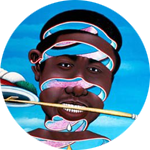
African Art Now: Masterpieces from the Jean Pigozzi Collection
November 16, 2005–February 26, 2006
African Art Now: Masterpieces from the Jean Pigozzi Collection profiles 28 artists from 15 African countries, all of whom came of age in Africa and maintain close ties to their native countries. No single tradition or method unites these artists. Rather, they reflect the complex heritage of Africa today and respond to both the historic traditions of their local cultures and the new era of international globalism.
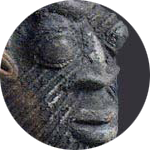
Where Gods and Mortals Meet: Continuity and Renewal in Urhobo Art
June 23–September 25, 2005
Devoted to the art of the Urhobo peoples, Where Gods and Mortals Meet illustrates ways that art serves to establish and reinforce cultural identity. The exhibition considers the full range of Urhobo creativity, from personal images offering protection and advancement to communal shrine art. Through the works of artist Bruce Onobrakpeya, it also offers a contemporary elucidation of the meaning and iconography of the central themes of Urhobo art.

insights
February 27–December, 5 2005
insights features the work of nine contemporary artists from the museum’s collection. By displaying ensembles rather than individual works, the exhibition reveals the artistic process and the play of experimentation, continuity and change in each artist’s chosen subjects and materials. The artwork on exhibit reflects the collection’s strength in contemporary South African art.
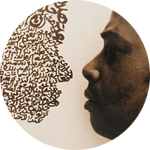
Textures: Word & Symbol in Contemporary Africa Art
February 11–September 4, 2005
The interplay of word, image and space creates visual poetry in these contemporary installations. The works employ text and graphic symbols to tell stories about memory, identity and the power of language. In doing so, they bring African visual histories into the global debate on conceptualism, which often melds word and image. In diverse ways, they celebrate the marriage of aesthetic form and literal meaning, play with the ambiguity of text and help us to consider the active role of the viewer in the “translation” process of “reading” visual images.
2001 – 2004
2004

Treasures
November 17, 2004–August 15, 2005
The exhibition is the centerpiece of a yearlong celebration marking the museum’s 25th anniversary since becoming part of the Smithsonian Institution in 1979. The presentation includes 73 traditional masks and wooden sculptures—masterpieces from the Smithsonian National Museum of African Art’s collection and special loans from private collections throughout the United States—many of which have never been exhibited publicly in this country.

Playful Performers
April 9–December 12, 2004
Playful Performers is especially for children, their friends and the playful at heart. We invite you to see how children in Africa learn through playful inventiveness and creativity.
2003
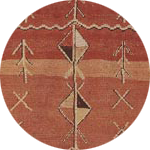
The Fabric of Moroccan Life
June 6–November 2, 2003
The Fabric of Moroccan Life presents some of the finest and most important weavings in existence. The 67 objects on display include rugs, textiles and jewelry.
The Fabric of Moroccan Life is organized by the Indianapolis Museum of Art and is under the high patronage of His Majesty Mohammed VI, King of Morocco. The museum is grateful to the Embassy of the Kingdom of Morocco. Support for this exhibition was generously provided by Sidney and Kathryn Taurel, Joseph’s Oriental Rug Imports and Royal Air Maroc.
The Smithsonian is grateful to the Boeing Company, Coca-Cola Africa, Royal Air Maroc and the Moroccan National Tourists Office for their generous support of the presentation at the National Museum of African Art.

Ethiopian Passages: Dialogues in the Diaspora
May 2–December 7, 2003
While exploring the complexities, diversity and vibrancy of the artistic practices among artists of Ethiopian descent, Ethiopian Passages: Dialogues in the Diaspora brings together 10 artists, from across several generations, who have addressed issues of identity, experienced displacement and created new “homelands.” Their artworks span the media—from paintings, mixed media, photography and digital prints to ceramic and papier mâché sculptures, murals and on-site installations.
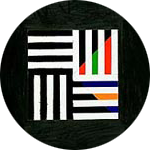
Journeys and Destinations: African Artists on the Move
January 31–November 30, 2003
Journeys and Destinations explores the important histories of migration and the negotiations of artistic, cultural, personal and group identities among African artists who make up the growing and significant diaspora of practicing artists now living in Europe and America.
Ethiopian Icons: Faith and Science
January 3–October 5, 2003
This exhibition focuses on the icon, an art form associated with the Ethiopian Orthodox church. Ethiopian Icons
reflects two voices, those of the curator and the conservator, as they explore the unique imagery of the museum’s icons that have recently undergone technical analysis and conservation treatment.
2002
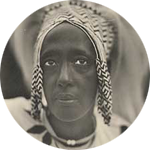
In and Out of Focus: Images from Central Africa, 1885–1960
December 6, 2002–March 16, 2003
In and Out of Focus, examines how widely disseminated images by Euro-American photographers created and perpetuated ideas and sentiments about the peoples of central Africa who lived under colonial rule. Among the featured photographers is Casimir Zagourski (1883–1944), one of the most successful practitioners whose evocative works are highlighted in the exhibition.
In addition, the exhibition explores the role Africans played in the photographic encounters. In some instances they were active participants, ”performing” for the cameras and developing strategies to meet the photographers’ demands. Africans also frequented photographic studios and took up photography to demonstrate their modernity.
The photographs on view are from the extensive holdings of the Eliot Elisofon Photographic Archives at the National Museum of African Art.
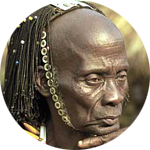
A Personal Journey: Central African Art from the Lawrence Gussman Collection
June 9–August 14, 2002
These 75 highlights from the Gussman collection probably date from the late 19th to early 20th century and come from more than 30 different African cultures that span the present-day nations of Cameroon, Gabon, Equatorial Guinea, the Republic of the Congo, the Democratic Republic of the Congo, Angola and Zambia. Many of the objects exemplify the free exchange of ideas, beliefs and artistic practices that occurs across ethnic boundaries in central Africa and has resulted in distinctive art forms. Viewed together, these works highlight the dynamic nature of cultural exchange while they present the personal expressions of African artists.

Gifts and Blessings: Textile Arts of Madagascar
April 14–September 2, 2002
Cloth is considered the ultimate gift and plays a vital role in the social and economic lives of women and men in Madagascar. Gifts and Blessings examines the historical context and dynamism of contemporary cloth production through a comprehensive collection of textiles, including silk and cotton wrappers, burial shrouds, marriage cloths, fashions and textile art, and two important cloths given as diplomatic gifts to President Grover Cleveland in 1886 by Malagasy Queen Ranavalona III.
The book Object as Envoys: Cloth, Imagery and Diplomacy in Madagascar was published in conjunction with the exhibition.
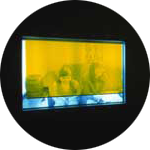
The Last Supper Revisited
January 12–27, 2002
The installation by South African artist Sue Williamson commemorates District Six, a community in Cape Town, South Africa, that was razed under apartheid. The artist has set a table for an intimate feast with multiple resin blocks containing scraps of precious and mundane objects that act as witnesses to and survivors of the racist apartheid laws.
2001

In the Presence of Spirits: African Art from the National Museum of Ethnology, Lisbon
June 10–September 16, 2001
The National Museum of Ethnology in Lisbon houses a major collection of African art primarily from Angola, Mozambique and Guinea-Bissau. From exquisitely created dolls and stools to awe-inspiring masks and power figures, the objects in this exhibition represent traditions that may predate the arrival of the Portuguese in Africa. This is the first time these objects have toured the United States.
In the Presence of Spirits was organized by the Museum for African Art, New York, in cooperation with the National Museum of Ethnology, Portuguese Institute of Museums, Ministry of Culture, Lisbon, Portugal. The exhibition has been made possible through the generous support of BP in Angola.
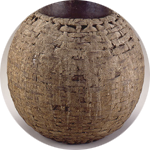
Beautiful Bodies: Form and Decoration of African Pottery
May 6, 2001–January 6, 2002
Beautiful forms, rich surface textures and sumptuous colors characterize these handbuilt clay vessels from continental Africa. These 19th- and 20th-century vessels that evoke both human and geometric forms were used for domestic and ritual purposes.

Encounters with the Contemporary
January 7, 2001–January 6, 2002
The National Museum of African Art plays a major role in the collection of contemporary African art in the United States. The selections from the museum’s growing contemporary collection draw attention not only to the rich history and continuing vitality of modernist artistic practice in Africa but also to the history of the museum’s collection and its future commitments to contemporary arts.
1987 – 2000
2000

Chant Avedissian: A Contemporary Artist of Egypt
November 19, 2000–February 19, 2001
A series of panels begun in 1991 by contemporary artist Chant Avedissian address the multilayered visual history and social memory of modern Egypt. Drawing subject matter from billboard advertisements and popular media of 1950s Cairo, the artist creates nostalgic, whimsical, and at times, satirical commentaries on the strength of the visual in public culture.

Identity of the Sacred: Two Nigerian Shrine Figures
September 24, 2000–April 2, 2001
People worldwide wear symbols that help identify their relationships to others in a group, in society and to the world at large. The Igbo and Urhobo peoples of Nigeria carve wooden figures that represent tutelary deities and ancestors. The adornments, scarification, color, surface treatment and gestures on these figures are hallmarks of their identities.
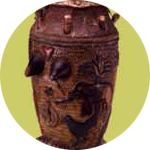
Audible Artworks: Selected African Musical Instruments
June 25, 2000–April 8, 2001
Music is an integral element of African life. This selection of musical instruments demonstrates the formal inventiveness of African artists who create objects that are a delight for the eyes as well as the ears. A listening station provides sample recordings of music made by instruments similar to those on display.
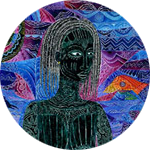
Transatlantic Dialogue: In and Out of Africa
May 21–September 3, 2000
Over the centuries, a dialogue evolved across the Atlantic as Africans came to the New World and blacks from America returned to their continent of origin. An aesthetic conversation has recently developed between African and African American artists as they work from different perspectives to reconcile their African identity and heritage within the currents of contemporary art. This exhibition explores the varied ways that African and African American artists interpret their ideas and identities. Similarities of style as well as diversity of expression emerge from a shared African heritage.
The exhibition was organized and circulated by the Ackland Art Museum, The University of North Carolina at Chapel Hill.

The Artistry of African Currency
March 12–July 23, 2000
This exhibition contains a variety of objects that have been used across Africa to facilitate trade and measure wealth. Although cowrie shells, aggrey beads, ivory and cloth have served historically as currency, metals have also been used from the earliest times. The Artistry of African Currency features copper and iron implements, wands, bracelets and anklets—objects valued as much for their elaborate forms as for their intrinsic value.
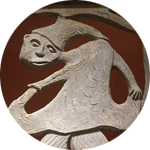
A Concrete Vision: Oshogbo Art in the 1960s
January 23–October 22, 2000
During the early 1960s, a major artistic transformation occurred in Oshogbo, a Yoruba town in western Nigeria. Here visual, literary and performance artists drew on traditional ideas to create new forms. A Concrete Vision
features works by 11 visual artists from the earliest days of the Oshogbo school. Accompanying the installation of the large openwork concrete screens by Adebisi Akanji is a discussion of the museum’s conservation treatment.
1999

Wrapped in Pride: Ghanaian Kente and African American Identity
September 12, 1999–January 2, 2000
Asante strip-woven cloth, or kente, is the most popular and best known of all African textiles. The exhibition focuses on the history and use of kente in Africa and explores contemporary kente and its manifestations. This exhibition is a collaboration between the National Museum of African Art and the Anacostia Museum and Center for African American History and Culture.
The exhibition was organized by the UCLA Fowler Museum of Cultural History, Los Angeles, and the Newark Museum, Newark, N.J.
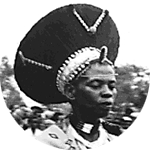
Hats Off! A Salute to African Headwear
July 18–December 26, 1999
Among the most beautiful and creative objects of personal attire worn by African peoples are innumerable types of headwear fabricated from various materials. Drawing from its collection, the museum pays tribute to both the creative genius of their makers and the status and prestige of those who wear them.
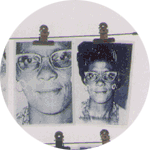
Claiming Art/Reclaiming Space: Post-Apartheid Art from South Africa
June 20–September 26, 1999
Contemporary South African art takes many forms and expresses a range of ideas and emotions. The system of repression that ruled in South Africa until recently denied black artists opportunities for creative expression. With the relaxation and elimination of barriers since 1989, the strictures on artists have lifted. Many of the 54 works on view by both black and white artists contain strong political and social statements.

Sokari Douglas Camp: Church Ede, A Tribute to Her Father
March 21–June 20, 1999
Sokari Douglas Camp (b. 1958) has sculpted figurative works in steel that evoke memories of her youth in southeastern Nigeria. In 1984, on the death of her father, she created Church Ede, a monumental kinetic sculpture reminiscent of a Kalabari funeral bed, as a tribute to her father.

Baule: African Art|Western Eyes
February 7–May 9, 1999
This exhibition of more than 150 works presents the full range of objects created by Baule artists and contrasts how the Baule experienced these objects with how Western museums have presented them.
The exhibition was organized by the Yale University Art Galley in cooperation with the Museum for African Art, New York.
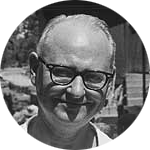
New Acquisitions: Gifts from the Lawrence Gussman Collection
Mid-December 1998–Spring 1999
Lawrence Gussman’s interest in African art grew out of a personal involvement with the people of Africa and Albert Schweitzer’s hospital in Gabon. He began collecting seriously in 1965 and amassed a premier collection of art from Gabon with strong representation from the Congo region. A generous lender and donor, Lawrence Gussman is giving his collection of African art to the National Museum of African Art; the Neuberger Museum, Purchase College, State University of New York; and the Israel Museum in Jerusalem.
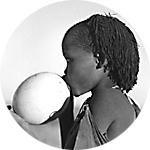
South Africa 1936–1949: Photographs by Constance Stuart Larrabee
September 20, 1998–February 28, 1999
Constance Stuart Larrabee (1914–2000) lived and worked as a professional photographer in South Africa until 1950. Her aesthetic eye is apparent in the exquisite black-and-white images that document the lives of African peoples in both rural and urban settings. These images have become timeless works of art. South Africa 1936–1949: Photographs by Constance Stuart Larrabee explores Larrabee’s vital and imaginative vision and her ability to capture poignant moments in the history of South Africa.
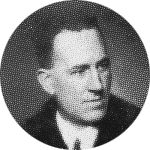
African Forms in the Furniture of Pierre Legrain
August 16–November 29, 1998
African objects that came into Paris from the French colonies in the 1890s inspired European artists who sought to find new patterns and forms to incorporate into their work in the early 1900s. One such artist, Pierre Legrain (1889–1929), designed furniture for collector Jacques Doucet and came to be recognized for his “negro” furniture. This exhibition explores the influence African chairs and stools had on the work of Legrain.
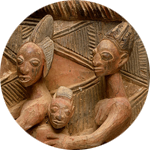
Olowe of Ise: A Yoruba Sculptor to Kings
March 15–September 7, 1998
African art is not always anonymous; some masterpieces were made by skilled individuals whose fame extended well beyond the villages or towns in which they lived. Olowe of Ise (c. 1875–c. 1938) was such an artist. His unique style of carving attracted the notice of Ekiti-Yoruba kings who commissioned him to sculpt doors and veranda posts for their palaces.
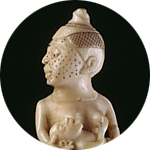
A Spiral of History
February 1–April 26, 1998
Ivory tusks carved with relief figures are among the splendid corpus of objects attributed to 19th-century artists of Kongo-speaking groups that inhabited the West Central African region then known as the Loango Coast. This exhibition focuses on one tusk acquired by the museum and explores its place of origin, the artist or workshop responsible for its creation, the possible meanings of the figurative scenes, and the audience for whom it was created.

Poetics of Line: Seven Artists of the Nsuka Group, Nigeria
October 22, 1997–April 26, 1998
The 64 paintings, drawings, prints, wood sculptures and mixed-media works on view were created by seven Nigerian artists who studied or taught in the Department of Fine and Applied Arts at the University of Nigeria, Nsukka.
New Traditions from Nigeria: Seven Artists of the Nsukka Group by Simon Ottenberg was published in conjunction with the exhibition.

The Art of the Personal Object
Closed March 18, 2007
This exhibition celebrates the creativity of African artists who have made utilitarian objects of great beauty. Made to fulfill a specific function, each object was also skillfully conceived to provoke visual and tactile delight. Collectively, these are objects that were meant to be both used and seen.
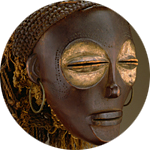
Images of Power and Identity
September 1987–December 2003
This exhibition introduces the visual arts of Africa south of the Sahara. While it is not intended to be a comprehensive installation, it is a presentation of some of the most familiar and visually compelling imagery from various cultural groups. Included are figures, masks, pottery, and jewelry, works of art that were associated with divination, altars, mask performances, rites of passage, and items of regalia and personal adornment. Aesthetic, thematic, technical, and historic concerns have been considered in selecting the works of art, which are arranged according to geographic and cultural regions.

